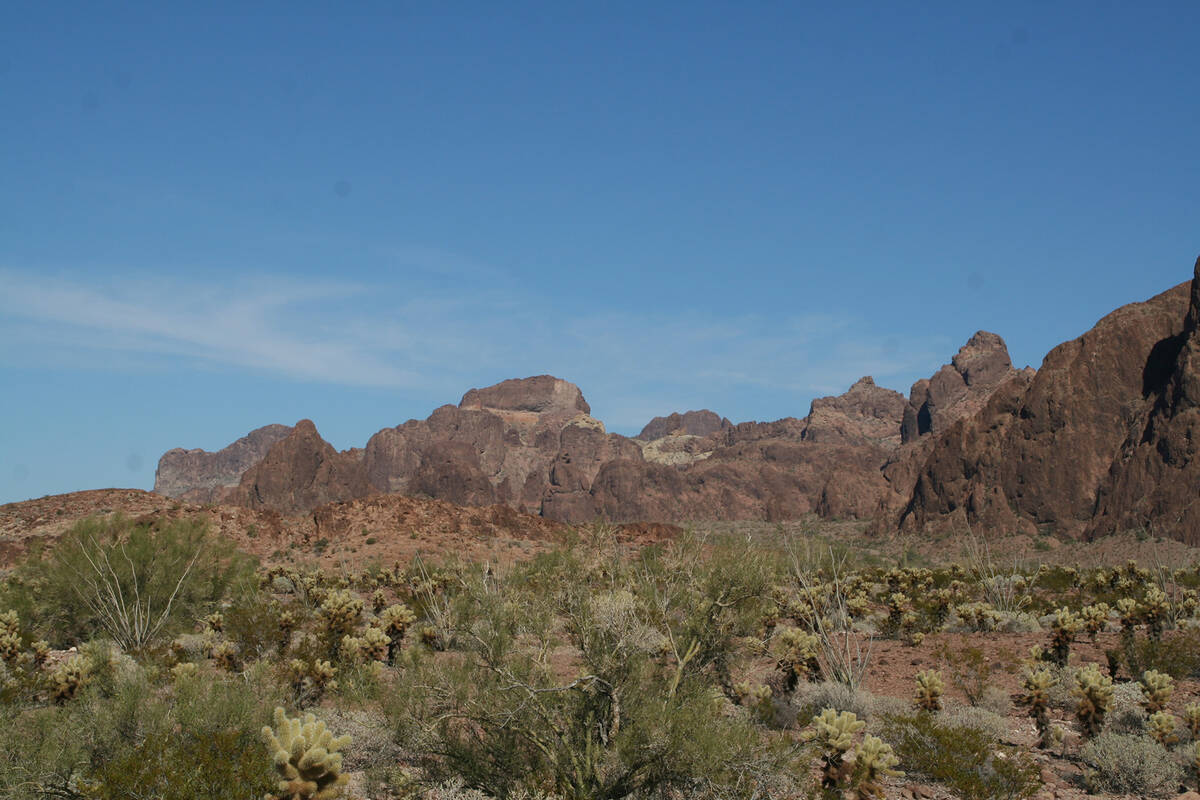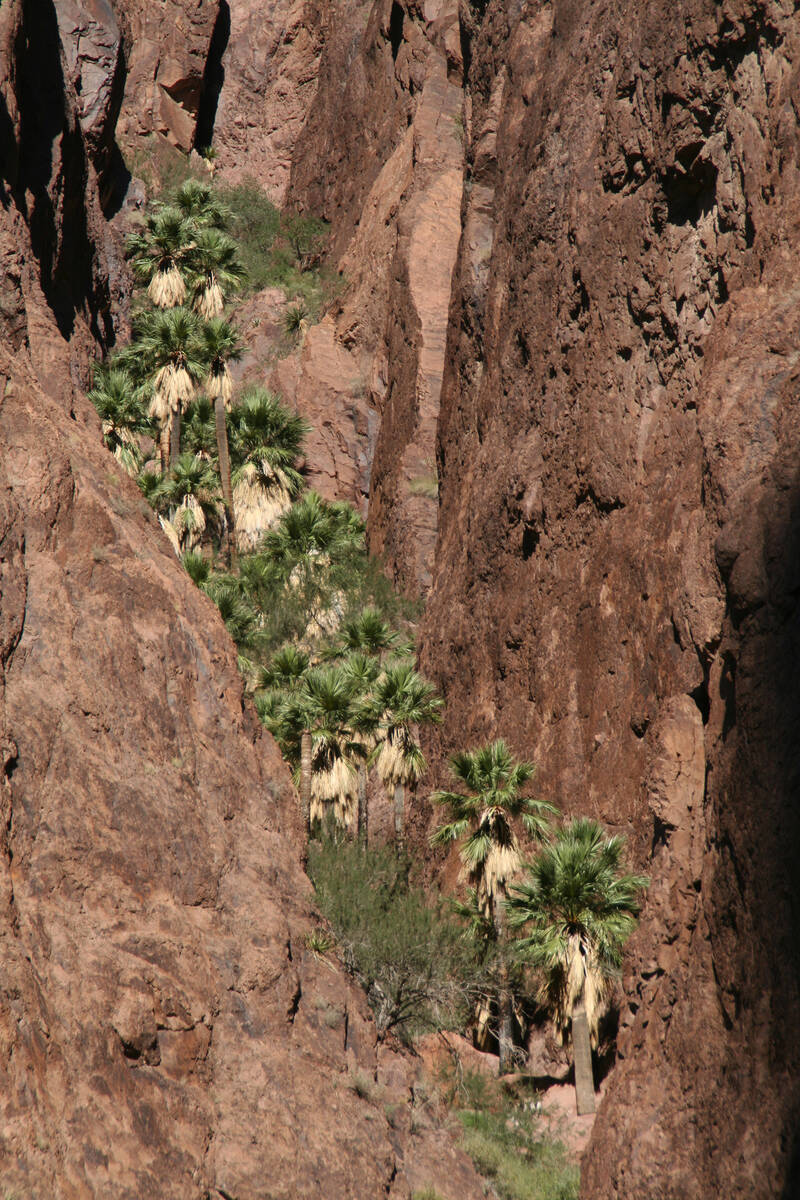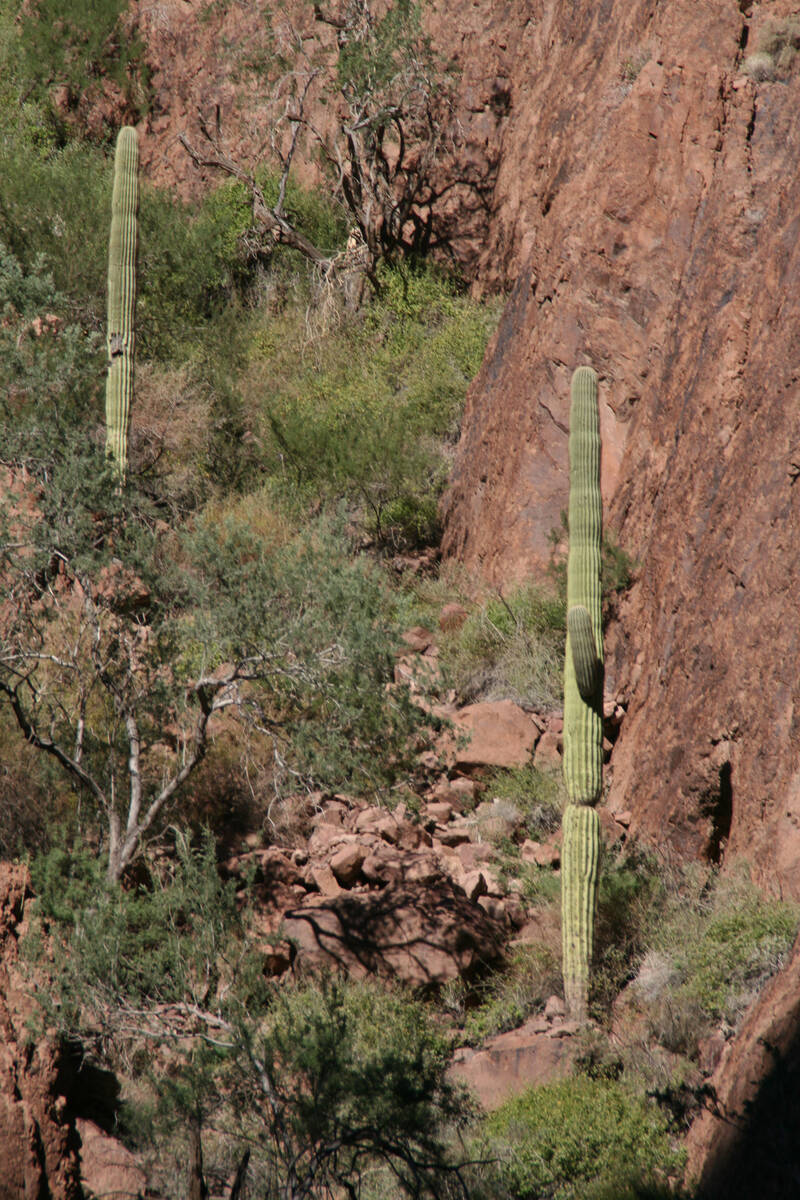Remote refuge home to palm oasis
If you feel the need for a very remote getaway, then the Kofa National Wildlife Refuge in Arizona might be a good bet. Located pretty much on the road to nowhere, it is itself a wonderful destination for hiking, camping, wildlife watching and photography, as 80 percent of the park is designated as wilderness.
Established in 1939, it encompasses more than 665,000 acres and protects the more than 400 desert bighorn sheep and other wildlife living here. It is interesting to note that the park was established after a 1936 campaign brought on by Maj. Frederick R. Burnham, a famous frontiersman and military scout whose exploits inspired his friend Lord Robert Baden-Powell to create the Boy Scout movement.
Worried about the fate of the desert bighorn sheep, Burnham appealed to Arizona Boy Scouts, which took up the cause. Two years later, through tireless advocacy by 10,000 Scouts, the range was formed. In 1976, the U.S. Fish and Wildlife Service renamed it the Kofa National Wildlife Refuge. (Kofa is an acronym derived from a well-known area mine: the King of Arizona.)
Palm Canyon is best known for its natural grove of native California fan palms, the only one in Arizona. The tree itself is rare; Washingtonia filifera is the only native palm in the Southwest, and there only 158 fan palm oases in all North America. These palms usually live for 80-90 years and grow up to 75 feet, but thrive only where there are copious amounts of water. The canyon is also home to typical Sonoran Desert plants such as ocotillo, palo verde, ironwood and cacti such as saguaro, prickly pear, cholla, barrel and hedgehog.
To see Palm Canyon, take the Palm Canyon National Recreation Trail. From the signed trailhead and parking area follow the obvious yet rocky trail into the canyon. The landscape here is made up of rhyolite, a volcanic rock.
Walk about five minutes or so and you will already be in the canyon and to a signed viewpoint. Look for the interesting plant called the Kofa Mountain barberry, an endemic plant that is only found in Southwestern Arizona. You will recognize it by the holly-shaped leaves. You might also see the canyon wren and hear its distinctive song, as well as see white-throated swifts, thrashers and gnatcatchers.
Continue hiking to about one-half mile from the trailhead and you will find another sign that reads “PALMS,” with an arrow pointing north. Depending on what time you are in the canyon, some people need a little help in seeing the palms as they are often shaded except around the noon hour.
Keep an eye out where you step, sit or put your hands as there are plenty of prickly plants and also many reptiles here. Besides the western diamondback and other venomous snakes, the Gila monster lives in the area. In addition to it being venomous, it is the largest land lizard native to the United States. Other wildlife in the refuge includes mountain lions, mule deer, kit foxes, foxes, badgers and the interesting but elusive ringtail cat.
There are no services at all at Palm Canyon. Be sure to bring all your own water and supplies on this outing.
The elevation at the trailhead is about 2,141 feet so temperatures will be about the same as Las Vegas. Camping is permitted on the refuge and overnight parking is allowed at Palm Canyon parking area.
Palm Canyon can be found by driving 18 miles south of Quartzsite along U.S. Highway 95 and then going left onto a signed and maintained gravel road. Drive 7 miles east to the parking area and trailhead.
For more information contact the refuge at 928-783-7861 or visit www.fws.gov/refuge/kofa.
Many of Deborah Wall’s columns have been compiled into books about hiking in the Southwest. She is also the author of “Great Hikes, a Cerca Country Guide” and a co-author of the book “Access For All, Seeing the Southwest With Limited Mobility.” Wall can be reached at Deborabus@aol.com.
Directions:
Take U.S. Highway 95 south about 225 miles to King Road and turn left.


















